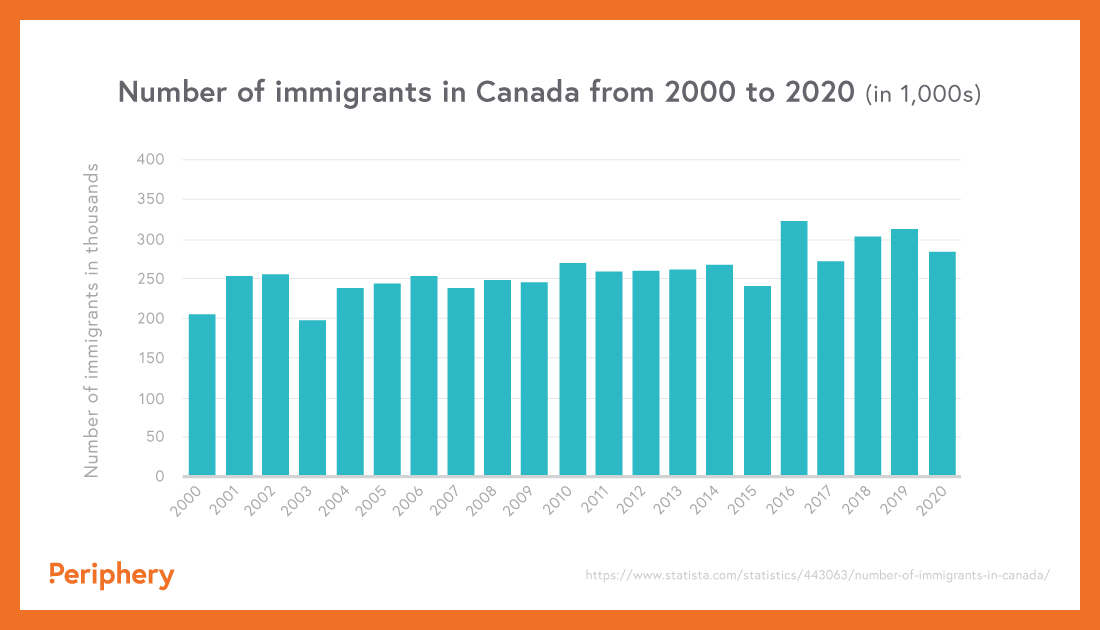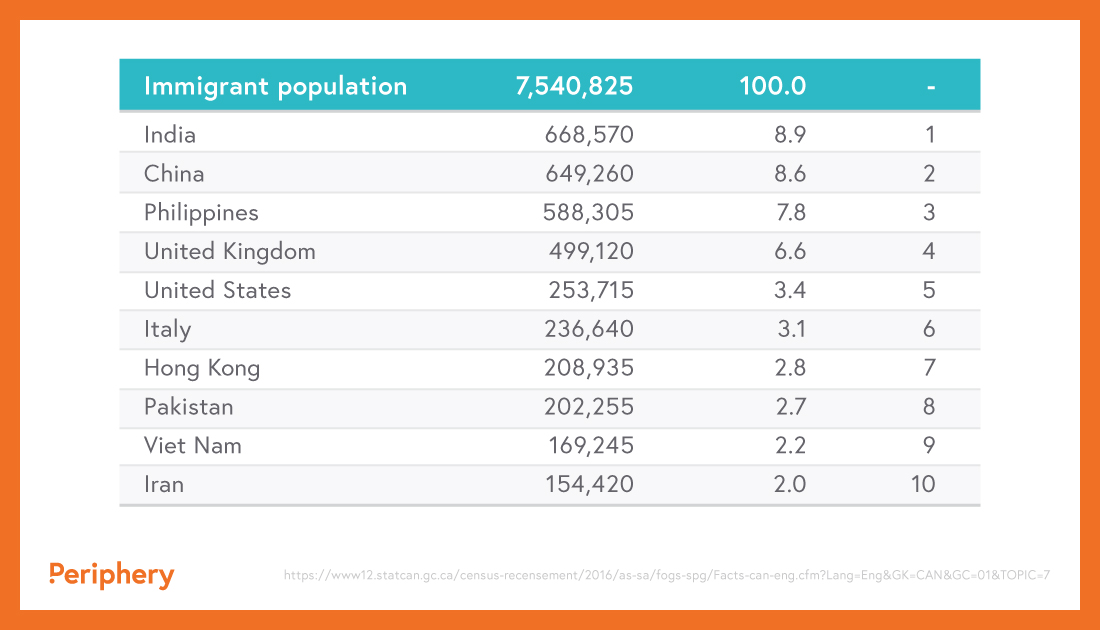This blog series aims to explore Canada’s Chinese marketing landscape in detail, from population and immigration statistics to the pros and cons of channels both online and offline. Each post will be based upon a single subject and provide facts and strategies about the lucrative opportunities available for companies to break into a new market and see great success.
There’s an incredible, lucrative opportunity for Canadian businesses who are ready to flourish in an all-new market, and it’s time to stop sleeping on it — marketing to Chinese consumers. The Chinese population in Canada is set to grow and continues to show immense buying power paired with an affinity to spend. Keep reading to learn the stats behind the impact of this audience on the Canadian economy.
We live in an increasingly globalized world — one that must accept the growing importance of the movement of goods and people. Historically, Canada celebrates being a diverse, multicultural country made up of a large number of every generation immigrants from all over the world who retain their unique cultural heritage while also contributing to a larger national image. The nation’s highly diverse ethnic population continues to define national sentiment. This diversity is a key characteristic that businesses must consider when looking to thrive within the Canadian market.
Chinese Immigration in Canada
Immigration to Canada has seen a significant change over the last 50 years. While there is a long history of Chinese immigration to Canada, and the nation has for many years been considered a premier tourist destination, the last few years (disregarding 2020 and the COVID-19 pandemic’s effect on global travel) have seen a massive spike in the amount of foreign-born immigrants to Canada — about 300,000 annually. As of 2019, there were just under 8 million immigrants with permanent residence living in Canada — about 21.5% of the population. This is one of the highest rates of immigration in the world.

Much of the observed rise in immigration is coming from Asia. The 2016 census found that Chinese immigrants specifically are the second-largest foreign born group in Canada (falling just below India) and making up 8.6% of the total immigrant population. In 2016, Statistics Canada found that 79.2% of the total Chinese population was spread between British Columbia and Ontario, predominantly within Vancouver and Toronto. The Chinese community is projected to grow to 2.7 million by 2031.

Chinese Tourism in Canada
This large Chinese community has also been good for business because of its positive effect on inbound tourism. Canada is a beautiful place, and Chinese people are no strangers to this sentiment. China is one of the largest economic contributors to outbound tourism expenditure; the Canadian Government is developing initiatives to build long-term economic relationships with China. In 2019, 749,000 Chinese tourists came to Canada, the second-largest source market for overseas travellers behind the UK. Currently, tourism from China accounts for over $1 billion to the Canadian economy each year, averaging to about $2,850 per visitor.
Chinese Spending and Digital Habits in Canada
Tourism aside, Chinese Canadians have a spending power of more than $61 billion, with household incomes at least 1.4 times higher than average. They are especially interested in luxury goods, services, and travel, with spending projected to nearly double to 40% of the global luxury goods market by 2025. What’s more, Chinese Canadians tend to be heavier internet users by a whopping 25%, with their top two favourite apps being Facebook and WeChat, the latter of which is used to communicate with family in China.
In terms of real estate, it’s no secret Chinese buyers are interested in owning a slice of Canadian property. One financial analyst compiled data stating 33% of total housing in Vancouver and 14% in Toronto are owned by Chinese people.
Reading these statistics, it’s evident why businesses are taking advantage of this opportunity to reach the lucrative Chinese market. Let us know if you have further questions about the power of the Chinese consumer, or else stay tuned for the next post in this series to learn how to overcome language barriers.

![Canada's Chinese Marketing Landscape: Immigration & Buying Power [Part 1] Canada's Chinese Marketing Landscape: Immigration & Buying Power [Part 1]](https://www.peripherydigital.com/wp-content/uploads/2021/11/1208326_Mkt-Banner2000px_101321.jpg)

